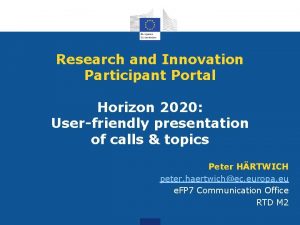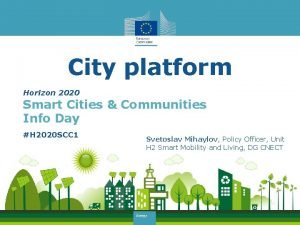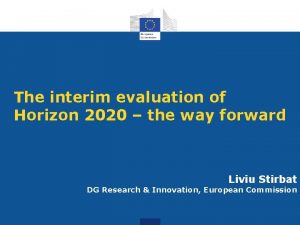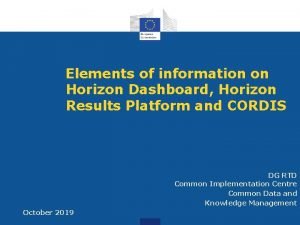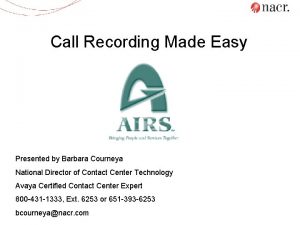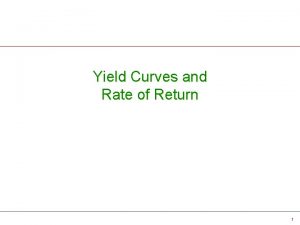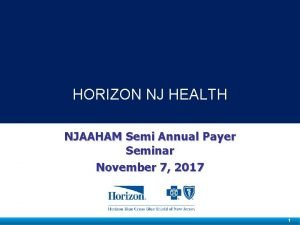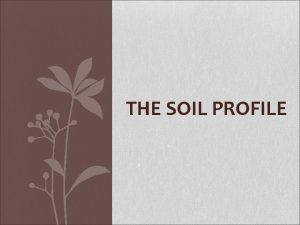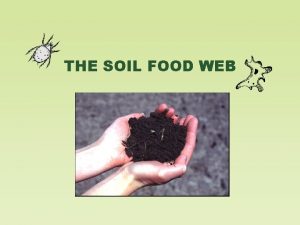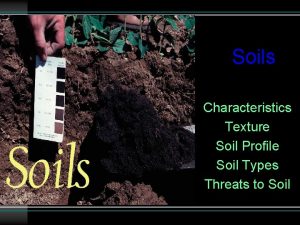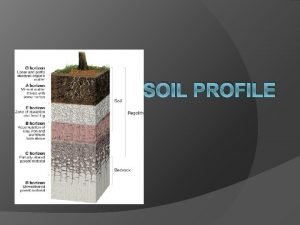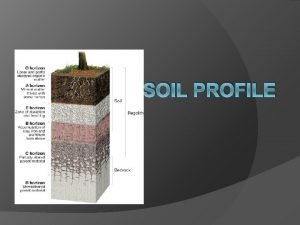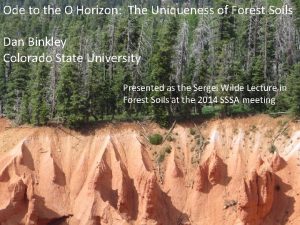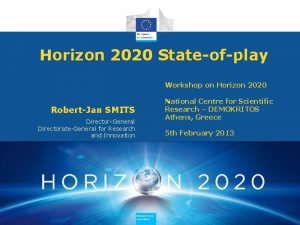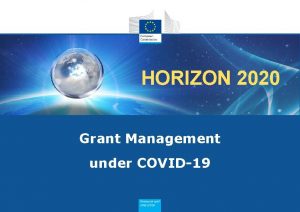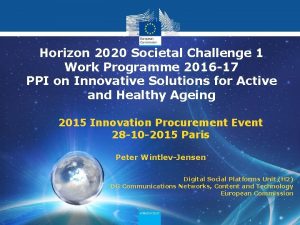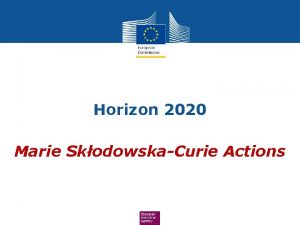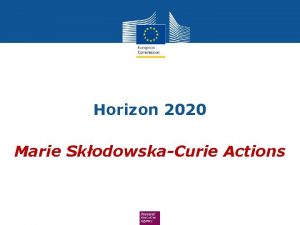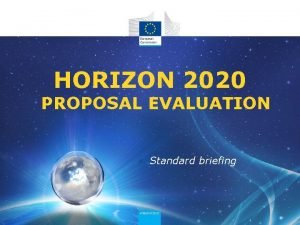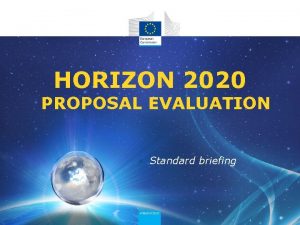HORIZON 2020 Call H 2020 GV2016 2017 Technologies





















- Slides: 21

HORIZON 2020 Call: H 2020 -GV-2016 -2017 Technologies for low emission light duty powertrains Action: “Measuring automotive exhaust particles down to 10 nanometres – Down. To. Ten” Project Overview PMP Meeting March 2017

Project Partners In collaboration with: The University of California at Riverside, National Traffic Safety and Environmental Lab (Japan) and National Metrology Institute (Japan) PMP Meeting March 2017 2

Aim of the project To propose a robust approach for the measurement of particles from about 10 nm both for PMP and RDE, complementing and building upon regulation development activities and addressing topics not tackled so far Objectives include development of both lab and PN-PEMS demonstrator equipment, optimised for the revised size range PMP Meeting March 2017 3

Why measure sub-23 nm Particle Number? <23 nm particles detected on regulatory cycles; levels relatively low • Sub-23 nm fraction of solid particles • estimated by differences between 10 nm & 23 nm CPCs • Loss corrected (between x 1. 7 and x 2) • Vertical dashed line • 6 x 1011 p/km limit for particles >23 nm • Other line indicates 6 x 1011 p/km limit for particles >10 nm • All mopeds were 2 -stroke unless otherwise specified in the figure B. Giechaskiel, J. Vanhanen, M. Väkevä & G. Martini (2017): Investigation of vehicle exhaust sub-23 nm particle emissions, Aerosol Science and Technology PMP Meeting March 2017 4

Some interesting results: <23 nm non-volatile PN from diesel fuel cuts and >23 nm particles derived from urea-SCR Driving events and ECT do produce <23 nm particles: further investigation required Light-duty (1. 4 L, 66 k. W) turbocharged diesel engine Amanatidis et al. (2017) J Aerosol Sci PMP Meeting March 2017 Amanatidis et al. (2014) ES&T 5

Questions to be answered within the new size range 1. What is the number fraction of exhaust particles below 23 nm? 2. What is the specific chemistry of the particles? 3. How to define the particle species: accumulation – nucleation mode, volatile – non-volatile, solid –liquid, Black Carbon – Elemental Carbon (BC-EC) 4. What fraction of exhaust particles corresponds to which species? 5. Which is the appropriate exhaust particle cut size? 6. How potentially un-regulated particles are linked to secondary aerosol formation 7. How to robustly correlate raw exhaust sampling suitable for both RDE engine development with dilution methods and sampling approaches employed during engine and vehicle type approval? PMP Meeting March 2017 7

Exhaust emission related particle types Manifold-out (ms) … PMP Meeting March 2017 Tailpipe-out/dilution (s) … Atmosphere (h) 8

Down. To. Ten structure and WP interaction PMP Meeting March 2017 9

Concepts and approach Equipment and sampling set-up (WP 2 & WP 3) Testing (emphasis on technologies that will be developed in the parallel projects (WP 4) PMP Meeting March 2017 Modelling particle transformation (tailpipe-out to the inlet of the measurement equipment) (WP 3) Synthesis and evaluation of testing results, incl. metrology (WP 5) 10

Vehicle class Passenger cars Engines Exhaust aftertreatment GDI & PFI 3 WC with and without GPF SI-Hybrid 3 WC with and without GPF Diesel SCR and/ or NSC with DPF CI-Hybrid SCR/NSC with DPF CNG 3 WC with and without GPF Different qualities Diesel SCR and DPF Reference diesel and biofuel admixtures CNG Not decided yet Different qualities >500 ccm 3 WC Reference Petrol and biofuel admixtures 3 WC Fuels AVL Research Networking Day 2017 50 ccm u. PGr. Ad. E, Pa. REGEn Reference Petrol and biofuel admixtures Reference diesel and biofuel admixtures HDV 2 -wheelers Cycles Source of the test vehicles NEDC, WLTC, 3 RDE cycles; real PEMS trips A hybrid from GV-2 -2016 Die. Pe. R A hybrid from GV-2 -2016 Gas. ON WHVC, standard CO 2 vehicle test cycles; PEMS trips WMTC, RDE cycles, PEMS test for >500 ccm To be decided Suggestions from the German programme

Overview of key project results Currently at Month 5 Timetable for Owner & other commercial partners involved use WP Exploitable knowledge Exploitable product(s) or measure(s) WP 2 Proposal for system to generate laboratory-grade exhaust-type of aerosol Device and method to generate aerosol (demonstrator in month 14) Calibration institutes, users of aerosol instruments 2020 TUT, TUM WP 2 Instrument benchmarking below 23 nm Knowledge on instrument performance Exhaust aerosol measurement labs Not relevant TUT, AVL, LAT/AUTh, RICARDO WP 3 Understanding formation, properties and characteristics of PN <23 nm definition for regulatory purposes Standardization and regulatory bodies 2018 Entire consortium WP 3 PN <23 nm sampling configuration for laboratory testing and PEMS Demonstrator (in month 17) Exhaust aerosol measurement labs 2020 TUT, AVL, LAT/AUTh, RICARDO WP 3 PN <23 nm measurement configuration Instrumentation to be proposed Exhaust aerosol measurement labs Not relevant Entire consortium WP 4 Down. To. Ten PN PEMS demonstrator unit Device and Test protocol (demonstrator in month 22) Exhaust aerosol measurement labs, regulatory authorities 2020 TUG, AVL, LAT/AUTh, RICARDO, TUT WP 4 Evaluation procedures for RDE particle number Software code and method (demonstrator in month 32) Exhaust aerosol measurement labs, regulatory authorities 2019 TUG, AVL, LAT/AUTh, RICARDO, JRC WP 5 Emission performance of late and forthcoming vehicle types Emission factors to be used in models and estimates Air quality research, policy making 2019 LAT/AUTH, TUG, TUT, TUM WP 5 Calibration procedures for measuring PN<23 nm Calibration test protocols Standardization and regulatory bodies 2020 TUT, TUG, TUM, JRC WP 5 Modelling of exhaust particle processes from emission to dilution Simulation model Researchers, manufacturers 2021 LAT/AUTH, TUT Sector(s) of application

Planned progress per work task, including milestones and deliverables Device and method to generate aerosol November 2017 PN <23 nm sampling config. Feb. 2018 Down. To. Ten PN PEMS demonstrator unit - July 2018 Evaluation procedures for RDE PN May 2019 PMP Meeting March 2017 13

Progress in the first months of the project PMP Meeting March 2017 14

Sampling setup for testing in the synthetic aerosol laboratory • • A setup was designed to maximize the penetration of non-volatile particles below 23 nm, while avoiding the creation of gaseous artefacts Important factors like robustness against artefacts (re-nucleation, growth of subcut particles), losses of (solid) particles, storage/release effects of gas phase compounds are being assessed in detail PMP Meeting March 2017 15

Sampling setup for testing in the synthetic aerosol laboratory The selection of the setup’s components (primary and secondary dilution stage, conditioning system, mixing elements, measurement devices) are based on experimental and theoretical data PMP Meeting March 2017 16

Preliminary sampling setup for testing in the synthetic aerosol laboratory PMP Meeting March 2017 17

Testing in the synthetic aerosol laboratory Tampere Technical University, February 2017 PMP Meeting March 2017 18

Raw vs Dilute Particle Sampling Modelling • • • AIM: To understand the relationship between the final quantification of raw-sampled “regulated particles” and dilute sampled one To understand quantify the effect of physicochemical processes during the transport of exhaust to the CVS tunnel – Critical for fundamental understanding and determining influence of measurement approach on conformity factors Overall approach would be to combine aerosol dynamics modeling with a CFD commercial code, similar to partner TUT work (Olin et al. 2015) PMP Meeting March 2017 19

Basic CFD analysis of Porous Tube Dilutor • Critical components will be identified, in which to perform CFD. For example, flow and mixing unsteady 3 D CFD simulations are performed for the PTD and mixer shown below by TU Graz. Evaluate pressure fluctuation effects on dilution – no particle impacts assessed yet; work on-going PMP Meeting March 2017 20

Modeling delayed primary: aerosol formation in the exhaust (CFD model) Modelling of particle formation rates in exhaust requires determining the spatial profiles of temperature, humidity, vapours and particles. In work by TUT, an inhouse model CFDTUTEAM, was developed and applied to a PTD dilution system with FLUENT. PMP Meeting March 2017 21

Any questions ?
 Research participant portal
Research participant portal Horizon 2020 2021
Horizon 2020 2021 Horizon 2020 smart cities
Horizon 2020 smart cities Horizon 2020
Horizon 2020 Horizon results platform
Horizon results platform Protective put payoff diagram
Protective put payoff diagram Stock options terminology
Stock options terminology +call +recording +call +centers +gartner
+call +recording +call +centers +gartner Horizon yield
Horizon yield Horizon nj health eft enrollment
Horizon nj health eft enrollment Horizon nj health appeal form
Horizon nj health appeal form Soil profile is a vertical cross section
Soil profile is a vertical cross section Soil food web horizon
Soil food web horizon Retention and drainage
Retention and drainage Characteristics of soil
Characteristics of soil Soil taxonomy chart
Soil taxonomy chart Soil
Soil Oaebcr soil
Oaebcr soil Regolith soil horizon
Regolith soil horizon Horizon
Horizon Introduction / lost horizon
Introduction / lost horizon Lost horizon summary
Lost horizon summary
